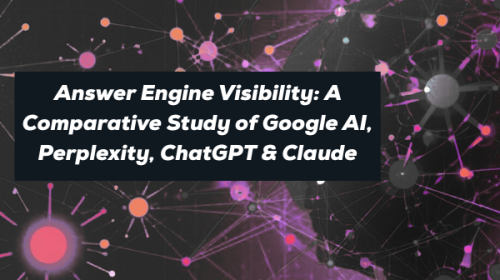In this video Derrick Turner, Director of Services at Augurian, describes the bi-modal approach to paid media that our agency takes when managing campaigns for our clients.
You’ll learn why carving out some budget, monthly, for experimentation can help uncover opportunities that could dramatically impact results.
Transcription
Derrick Turner: Hello everybody. My name is Derrick Turner. I’m the Director of Services here at Augurian. Today we’re going to talk about a concept which is very core to how the entire team operates, and that’s bi-modal marketing. Specifically, this really started as a IT concept back in the 90s, and something that really entered the digital marketing vocabulary over the last couple of years. It’s been a great tool to just have conversations around paid digital and understand the competing interests that you have in terms of getting dependable results and also learning new things.
I’m going to go through the concept and why we use it here at Augurian. The idea is pretty simple. We have two different ways of managing paid media spends for clients. Those two different ways are core, which we think of as a circle here. What this is supposed to be is dependable, tried and true tactics that are driving a positive ROI that we depend on for our consistency and results month in and month out.
With matured businesses, this is often between 70% and 90% of the marketing budgets. With new businesses, you have to test everything if you don’t know what’s going to dependably work, you won’t necessarily have that at the start. Core is basically something that we are always looking to test and add tactics to so we can incrementally grow marketing budgets that are both productive and useful for a company assuming you have the operational capacity to support it. The other concept is called Edge.
Basically, the size of it will vary depending on how mature you are, but this is the budget that we use to test and try to find new tactics to bring into the core. The difference here is we manage core not to fail. We depend on core. Edge tests have a chance of failing, and that’s okay. We all understand that, but really it’s trying to take a reasoned approach to what is the next best thing that’s most likely to work. Giving a shot. If it fails, fail quickly and then move on to the next step. Why that’s really important is tactics that don’t scale forever in paid search, paid social or really any of the other tactics.
Paid search is a particularly good example though. If you think about it, with searches, people are typing in keywords into Google, and then us trying to bid to start conversations to bring those people to your website. If somebody wants to buy a car, they’re going to type the keyword that relate to buying a car, there aren’t an infinite amount of searches that happen. Basically, it’s a reflection of the demand for that product. A lot of times in the search, what we see is that the returns stop after a point in time.
Here I got cost. Here I have return. As we go further, you get to this point where you can put more and more money into paid search and you’re not necessarily going to see the return. As a result, we have to think about what other tactics we can use to drive success for clients outside of other channels. How we think about that is essentially using Edge to build those tactics. Here I have another graph that’s showing returns, and this is showing time. If we think about what we’ve just noticed in terms of search, usually as an agency, we have a pretty good bet of what’s going to work out of the gate.
Search is pretty consistent in terms of driving results. We’ll see and we’ll optimize and we’ll get to a point where things are great. Over time as competition enters the market, if demand goes down, cost rise and the ROI actually is going to go down over time for a lot of digital marketing tactics. In order to make sure that we are driving as much business as possible, those niches really come into play. We try a new tactic, and that’s social. Great. That seems to work. You can get a little bit more juice out of that.
Say we try another tactic. It didn’t work. We tried it and its not something we want to continue. We failed fast, but really just try to keep iterating on other tactics in order to drive the most ROI that we can withdraw for our marketing budgets. For all those reasons, that’s why we really like the core and edge model, the bi-modal approach. We think it really helps drive better conversations in digital. I’m Derrick Turner. Thanks a lot for your time and attention. We look forward to helping you with all your digital marketing needs.



